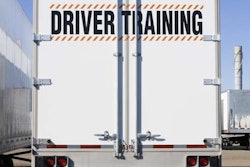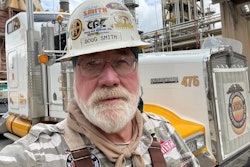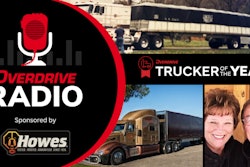The Federal Motor Carrier Safety Administration's new Entry Level Driver Training (ELDT) regs' compliance date is Feb. 7, meaning any prospective CDL skills-test taker without a Commercial Learners' Permit (CLP) before that date will need to complete course work with a training provider registered and self-certified as compliant with the rule in order to take the test and receive a CDL.
The long-awaited rule, as many regular Overdrive readers will know, was finalized in early 2017, after being developed during the Obama administration and set for publication late in 2016, then briefly delayed as the Trump administration came into place. For the first time, it establishes training standards for any driver looking to get a CDL, to upgrade a CDL from a lower class (such as moving from Class B to Class A), or to add hazmat or any school-bus/passenger endorsements.
With the final compliance date functionally in place at this point, FMCSA continues to build out its database of registered training providers -- today little more than a spreadsheet with a list of more than 8,000 locations of an untold number of companies providing training. (It's available for download via FMCSA's ELDT main portal at this link, but it's easy to miss -- scroll down the page until you see the header with this text: "Do you need to find a training provider?" There's a text link in what follows that goes to a direct download.)
[Related: The feds want trucking apprenticeships: How does an 'Owner-Operator Mentor Academy' sound?]
The rule gets quite specific about what training is required, setting forth standards for both classroom/knowledge-type training and behind-the-wheel instruction (no set number of hours) on the basic operation of a truck, control systems and dashboard instruments, pre- and post-trip inspections, hours of service, roadside inspections, backing and docking, distracted driving, driver-whistleblower protections and procedures, and more.
Yet the rule leaves space for creativity in just how trainers get to and through all that instruction, and there's no small amount of evidence forward-thinking small fleet owners are taking somewhat old-school, hands-on approaches to apprenticeship training and fitting those approaches directly within the new requirements. Harry Smith, part of the Smith family ownership of small fleet Ralph Smith Co., out of Utah, has long trained drivers up from prior careers with a handshake commitment on the part of the prospective CDL holder to spend at least a year with the company after getting licensed. I wrote about his approach glancingly when I spoke to FMCSA Driver Adivisory Committee member and oversize/overweight hauler Doug Smith, Harry's owner-operator father, back last year about the advisory committee's first meeting.








